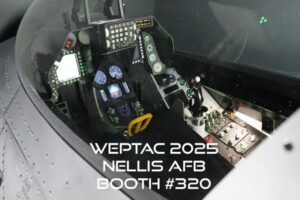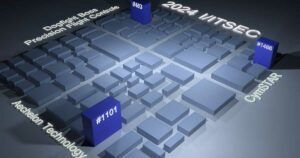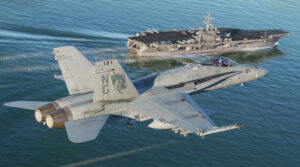
|
Simulators are useful tools for training and honing skills in any profession, from air traffic control to medicine. Technology is constantly improving and simulations can be remarkably realistic, while avoiding potentially fatal mistakes made by inexperienced trainees.
Let’s take a closer look at three typical examples of simulators: medical, flight and air traffic control.
MEDICAL SIMULATORS
The American College of Chest Physicians (CHEST) has a training center in Illinois that houses six simulation training labs designed to feel like intensive care unit (ICU) suites. Each simulation course has specific sets of learning objectives and are led by clinicians from a wide scope of practices who are experts in their respective fields.
Evidence-based medicine is combined with technologically advanced simulation education techniques and hands-on learning. The simulation program emphasizes current standards of practice, patient safety, evidence-based patient care, and formative assessments.
“We offer programs with a strong clinical focus on improving patient care in: Airway Management; Bronchoscopy; Critical Care Management; Critical Care Ultrasonography; Mechanical Ventilation; Sleep Management; and, Pulmonary Function Testing,” said Elizabeth Ball, e-learning manager of CHEST.
“Simulation-based training in healthcare gives the clinicians the opportunity to experience an … ICU scenario and practice hands-on procedures without the risk of having a live patient,” she said.
|
The individualized teaching gives participants direction and guidance on how to perform special skills, as well as ample time to practice. Trainees can track their own progress through skills assessments before and after tests, with instant feedback from the faculty.
“Our course participants are organized into several small groups that rotate through a set of different stations that practice different skill sets,” Ball said.
After participants have reviewed the course materials, they come prepared to participate in a short review before interacting with case scenarios and hands-on practice.
According to Ball, the drawbacks are mainly logistical.
“There is a small faculty-to-participant ratio to implement simulation-based training in order to provide the best outcomes for participants,” she said. “These courses take extensive planning and faculty development in order to ensure that all faculties are assessing against the same standards. There is also extensive equipment needs for simulation training. Much effort goes into gaining support for our equipment needs.”
At CHEST, the integration of a variety of task-trainers, low- and high-fidelity simulators, and actual medical devices provides optimal learning opportunities. Multimedia tools are used to enhance presentations and record events.
“We are also equipped with CAE LearningSpace, a center management system that connects our simulation learning resources with system management and performance assessment tools for health-care education,” Ball said.
LearningSpace integrates simulators, trainers and learners to help manage all aspects of an education experience, and has simulations for use in nursing, medicine, emergency medical services, hospital and military medic training. All CHEST training and ICU rooms are wired with video cameras that feed into LearningSpace so that the video can be reviewed to discuss learner performance.
FLIGHT AND ATC SIMULATORS
Pilots often make use of simulators in training. For the U.S. Coast Guard, simulators are essential training tools as they free up aircraft that would otherwise be used for training for use in active service.
Aero Simulation custom designed and developed the HC-144A Operational Flight Trainer Program for the Coast Guard, using nine Christie Matrix StIM WQ projection systems to give a 290-degree field of view. This is the world’s largest glass-mirror-based visual display system, and it allows for day and night scenarios in 18 different training exercises.
Christie Matrix StIM WQ projection systems are LED lit and provide a high contrast ratio, auto-alignment and screen brightness of nine foot-lamberts. Each projector has four million pixels, going a long way to provide a realistic simulation image for the Coast Guard.
At NASA’s Glenn Research Center, Boeing and Honeywell source their flight simulators from Precision Flight Controls in California. Tracy Cook, vice president of marketing and sales at Precision Flight Controls said the simulators can run on Windows Professional, Linux or X-plane.
X-plane can be operated on Mac OS, Windows, or Linux; on any device from a mobile phone to a full professional cockpit setup. Currently, there are 40 different aircraft models that can be simulated.
“Each simulator comes with 30 general aviation simulations, turbo-prop and light jet aircrafts,” he said.
PilotEdge in New Jersey provides an Air Traffic Control add-on to any existing flight simulator with Visual Flight Rules and Instrument Flight Rules flight training material.
“This is a series of 3 VFR flights and 11 IFR complete with cockpit videos, intro videos, ATC transcripts, and all the reference material a trainee pilot could ask for,” said Keith Smith, founder of PilotEdge
“ATC has been missing from simulation from the very beginning,” Smith said. “Most efforts to integrate ATC usually amount to the instructor behind the pilot pretending (badly) to be ATC, or an artificial intelligence-based ATC system, which delivers an experience so far removed from what it means to fly with ATC as to almost be useless. The only thing worse than something not being simulated is something being simulated very poorly, to the point of negative learning or distraction.”
Smith said that pilots benefit from the PilotEdge-equipped flight simulators as they are able to communicate with ATC during the course of their flight.
“This communication is a source of intimidation for new students, so called ‘mic fright,’ and remains a source of workload for experienced pilots alike,” he said.
|
Without an add-on such as PilotEdge, the reality of dealing with ATC and the presence of other aircraft are unaccounted for, hence the simulation is incomplete. This is acceptable for mastering individual tasks, such as landing or tracking a specific course.
“However, when the client is simulating a full end-to-end flight, this is where the system becomes vital to have,” said Smith.
LISTEN EFFECTIVELY
Pilots who are exposed to ATC simulators in their training also tend to listen more effectively to what is happening on the radio and build a picture of the airspace around them, understanding their position relative to other aircraft.
“This can be nothing short of life-saving in cases where an error is made,” said Smith. “Rather than blindly following landing and takeoff instructions, they are able to validate an instruction prior to executing it.”
Using ATC simulators can also expose an underlying inability to multitask or prioritize effectively.
“We have seen cases where a pilot in a simulator communicates perfectly with ATC, adjusts their spacing to make room for other traffic, and then lands in a shower of sparks with the landing gear up because they failed to notice there was a failure that we had introduced and only two of the three landing gear came down,” Smith said. “Their communication was great, their awareness of other aircraft was great…but had that simulator not included ATC and traffic, they would have caught the landing gear failure because they were not task-saturated.”
PilotEdge uses simulation platforms and real people in real time to train ATC.
“ATC can be trained by providing a virtual environment complete with a wide range of aircraft that participate in a scenario,” said Smith.
These aircraft can be driven by individual pilots in flight simulators. This can be a single “remote pilot operator” using a software program that drives multiple airplanes; or, pre-built flight paths where the aircraft don’t communicate with anyone, such as occurs in aircraft operating under VFR.
“Controllers work closely with other controllers who are adjacent, above or below them in the controlling hierarchy and PilotEdge provides an environment where multiple controllers can participate in the simulation, coordinating their efforts through verbal and electronic communication,” Smith said. “Just as in real life, they needn’t all be in the same facility and VoIP conferencing tools are used to facilitate remote communication.”
“The only disadvantage of using simulation exclusively during primary training is that there is potential negative training that occurs regarding the specific flight-control inputs, since simulators generally feel and fly slightly differently to real planes,” Smith said.
|
Additionally, since the initial bout of flight training is conducted by looking out the window, there is a tendency for pilots who trained extensively with lower-end simulation platforms to fixate on the instruments rather than looking outside. This is quickly remedied though, by the instructor covering up the instruments for 10-15 minutes, forcing the pilot to fly entirely by sight and sound rather than interpreting the instruments.
“In general, the hardware and software is licensed from multiple entities, some co-authored,” said Tracy Cook, marketing and sales executive for Precision Flight Controls. “However, X-plane is preferred.”
Clients usually build their own computers to specifications.
“The console, avionics and rudder pedals work with computers and full professional use systems, which are FAA approved,” Cook said.
Precision Flight Controls is now introducing GoPro cameras in the cockpit, which are positioned over the pilot’s shoulder to view their actions for study and assessment in reviewing previous lessons.
In addition to working at high-definition resolution, GoPro has versions that are WiFi enabled, allowing it to be mounted on headgear, walls, or equipment and controlled remotely. “Clients often include GoPro-style cameras to record the eye movements, arm/leg movements and body language of pilots in simulators for human factors analysis,” Smith said.
Although basic flight measurements saved in flight data recorders are used to analyze how an airplane was flown, video and audio recordings can often explain these measurements.
Simulation is a powerful training tool, with the number of applications for simulators growing. Furthermore, they seem to be becoming an invaluable medium for teaching within professions where safety is an overriding concern, such as medicine and air traffic control.

_web.jpg)
_web.jpg)
_web.jpg)


